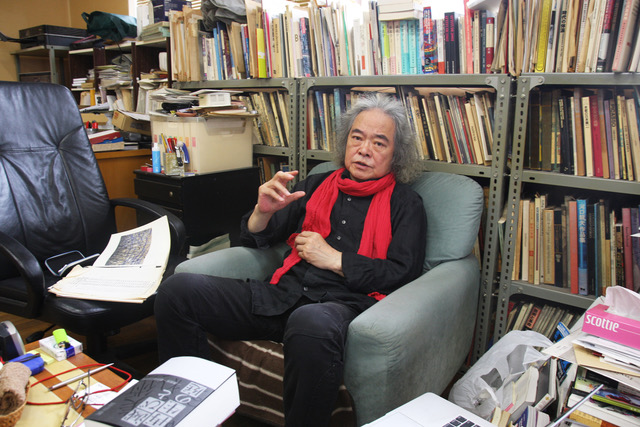
Reject Appreciation
©Kosai Hori

Reject Appreciation
©Kosai Hori

Kosai Hori
1947 Born in Takaoka, Toyama Prefecture, Japan. In 1967 he entered Tama Art University, and in the same year with the assistance of his peers he staged the performance piece “Self-Burial Ceremony”, with which his career as an artist began.He was also active in the Japanese student demonstrations of the late 1960s, from within which he became one of the founders, and subsequently leader, of a movement known as Bijutsuka Kyoto Kaigi (Artists Joint-Struggle Council) or “Bikyoto”, which sought to interrogate the institutionalized nature of art. The works of his early career tended to overlap with the activities of that movement, created as pieces questioning the foundations of art itself. With the aim of breaking through the boundaries of modernist painting, such works took a retroactive approach to the history of painting and become a process of searching for its origins. Departing from this source, Hori traced the development of painting’s formation within Eastern nations and within Japan - and in so doing his own personal pictorial space took form. Meanwhile, he also began zealously developing installation and performances pieces resonating with the many issues and phenomena emerging “on the borderlines” of the society and art of “here and now”. His works have been shown at numerous international exhibitions, including the 1977 Paris Biennale and the 1984 Venice Biennale.
Started activities as an artist since 1967 after entering Tama Art University. At the end of the 1960's, as part of the student movement, he set up and also acted as the chairman of an active group called "Artists Joint-Struggle Council (Bikyoto)” to question the institutional nature of art. The early works that Hori produced tended to overlap with his activities in such movements and with the aim of breaking through the boundaries of modernist painting he traced the history leading to modernist painting. And while looking at the origin of modernism, he followed the process of how painting in Japan had developed and created his own personal pictorial space. Meanwhile, he also began zealously developing and exhibiting installation and performances pieces resonating with the many issues and phenomena emerging on the borderlines of society in the art of “here and now”.